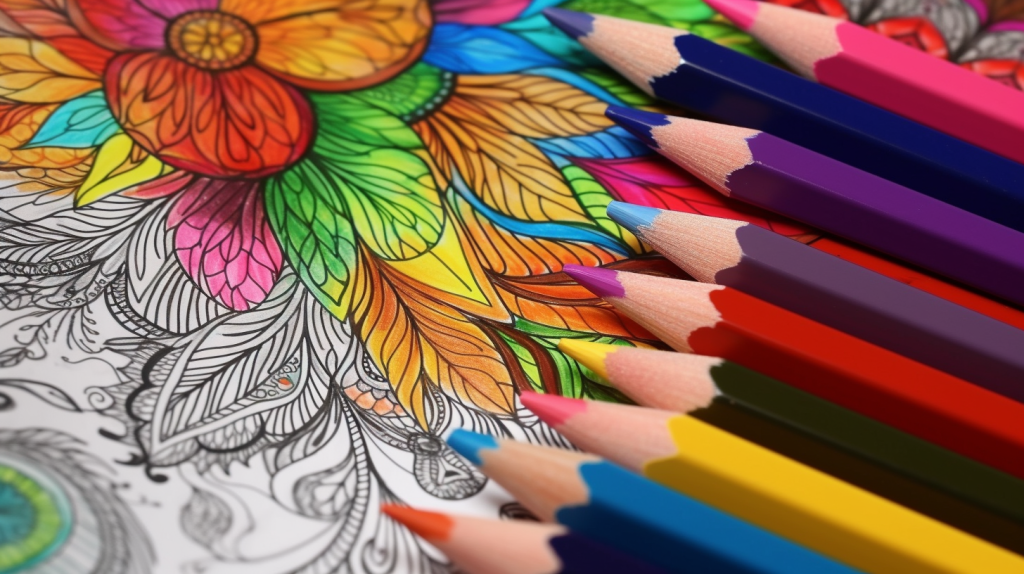Coloring is not just for kids, it’s also a relaxing and creative hobby for adults. There are many different coloring techniques you can use to create beautiful and vibrant artwork. In this article, we’ll explore how to use different coloring techniques, such as colored pencils, watercolors, and markers.

Introduction
Coloring is a fun and easy way to express your creativity and destress. Using different coloring techniques can help you create beautiful and unique artwork. Whether you are a beginner or an experienced artist, there are many techniques you can use to create stunning artwork. In this article, we’ll explore the basics of using colored pencils, watercolors, and markers to create beautiful and vibrant artwork.
Colored Pencils
Colored pencils are a popular coloring medium that is easy to use and versatile. They come in a variety of colors and are perfect for creating detailed and intricate artwork. Here are some tips for using colored pencils:
Choosing the Right Paper
When using colored pencils, it’s important to choose the right paper. Look for a paper that is smooth and thick, as this will help the colors blend more easily. Avoid using rough or thin paper, as this can cause the pencils to break and the colors to look dull.
Layering Colors
To create depth and dimension in your artwork, try layering colors. Start with a light layer of color, then add additional layers to create a darker shade. This technique will help your artwork look more vibrant and realistic.
Blending Colors
Blending colors is another important technique when using colored pencils. You can blend colors by using a blending tool, such as a blending stump or a cotton swab. This will help create a smooth transition between colors and create a more polished look.
Watercolors
Watercolors are a popular medium for painting, but they can also be used for coloring. They are perfect for creating soft and ethereal artwork. Here are some tips for using watercolors:
Choosing the Right Paper
When using watercolors, it’s important to choose the right paper. Look for a paper that is thick and textured, as this will help the colors blend more easily. Avoid using thin or smooth paper, as this can cause the paper to buckle and the colors to bleed.
Wet-on-Wet Technique
The wet-on-wet technique is a popular technique used in watercolor painting. It involves applying wet paint to wet paper, which creates a soft and blended effect. To use this technique, wet your paper with a brush or spray bottle, then apply the watercolor paint to the wet paper.
Dry Brush Technique
The dry brush technique is another popular technique used in watercolor painting. It involves using a dry brush to apply the watercolor paint to the paper, which creates a more textured and layered effect. To use this technique, dip your brush in the watercolor paint, then dab off the excess paint onto a paper towel. Use the brush to create dry strokes on the paper.
Markers
Markers are a popular coloring medium that is perfect for creating bold and vibrant artwork. They come in a variety of colors and are easy to use. Here are some tips for using markers:
Choosing the Right Paper
When using markers, it’s important to choose the right paper. Look for a paper that is smooth and thick, as this will help the colors blend more easily. Avoid using thin or rough paper, as this can cause the markers to bleed and the colors to look dull.
Layering Colors
To create depth and dimension in your artwork, try layering colors. Start with a light layer of color, then add additional layers to create a darker shade. This technique
will help your artwork look more vibrant and realistic.
Blending Colors
Blending colors is another important technique when using markers. You can blend colors by using a blending tool, such as a blending marker or a cotton swab. This will help create a smooth transition between colors and create a more polished look.
Conclusion
Coloring is a fun and creative way to express yourself and relax. By using different coloring techniques, such as colored pencils, watercolors, and markers, you can create beautiful and unique artwork. Remember to choose the right paper, layer your colors, and blend your colors to create vibrant and realistic artwork.
Frequently Asked Questions
What are some basic coloring techniques?
Some basic coloring techniques include shading, blending, stippling, and cross-hatching.
What is the difference between colored pencils and markers?
Colored pencils allow for more precise control and layering, while markers are more vibrant and blend easily.
How can I prevent my colored pencils from breaking?
You can prevent your colored pencils from breaking by not pressing too hard, sharpening them properly, and storing them horizontally.






